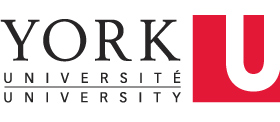Freedom of citizens to move safely, efficiently and sustainably through the urban environment plays a key role in the health of our cities. Our cities however have grown tremendously and have challenged planning and management of transit and roadways, leading to congestion, excess greenhouse gas emissions, crimes in a sparsely travelled and dark areas. Many with disabilities may also find navigation to be impossible. ISSUM aims to meet the challenges and provide an integrated solution by working on solutions to measure, analyze, simulate, and visualize the movement of people through 3D cityscape, regardless of the mode of transportation (e.g., foot, wheelchair, bike, car, and bus).
ISSUM's goal is to research and develop integrated intelligent systems for sensing, analysis, simulation and 3D visualization of urban population mobility which will strengthen the technology sector in Ontario, increase efficiency, reduce greenhouse gases and enhance the livability of urban regions for all Ontarians.
The project has five distinct areas of research that will be integrated at the completion.
3D Cityscape Modeling
3D city models are virtual representations of the physical urban world. The goal of this project is to research and develop novel AI systems for the efficient, automatic and accurate construction of 3D models of the urban scene, both outdoor and indoor.
Visual Analysis of Crowds
Modeling, simulation and visual analysis of crowds is a key part of ISSUM’s work. This involves innovative, adaptive algorithms for crowd size estimation, unusual activity detection, evacuation route planning, and optimization of retail layouts.
Intelligent Transportation Systems
Intelligent Transportation Systems use sensing, positioning and communications technology to enhance the performance of transportation networks. The goal of this project is to use computer vision technology to improve the quality and details of traffic analysis to better inform traffic planning and management.
Mobile Augmented Reality
Mobile Augmented Reality combines stored 3D models with online visual imagery and geo-positioning to provide location-aware services. Here we focus on mobile apps for indoor navigation, and in particular accessible navigation for people with disabilities, and emergency navigation for first responders.
Integrated Systems
A cornerstone of the ISSUM approach is an end-to-end pipeline that deliver real-time sensing, analytics, 3D visualization and simulation in a single application. This approach delivers an efficient one-stop intelligent system that allows users to monitor, assess and respond to current conditions, be alerted to important events, analyze complex situations and simulate the effects of changes to population dynamics and to the urban environment.
The proposed integrated ISSUM technology will be accomplished by addressing challenges in 1) large- scale cityscape modelling, 2) reliable multi-object detection and tracking in highly complex scenes, 3) efficient integration of multiple methods for photogrammetric camera calibration and geo-location, and 4) scaling up of crowd simulation and visualization algorithms to more complex scenes. Each of these challenges is of central scientific interest to computer vision, geomatics and computer graphics research communities. ISSUM aims to integrate advances in these three areas and produce a next-generation intelligent system for urban activity understanding and transportation applications.
